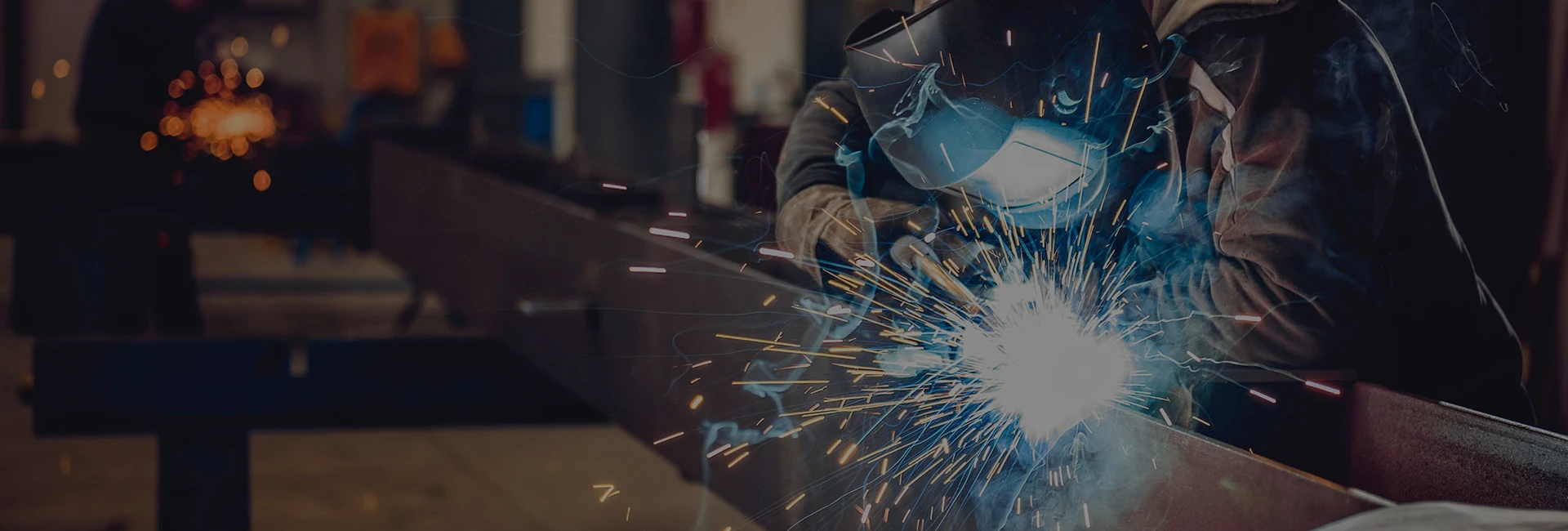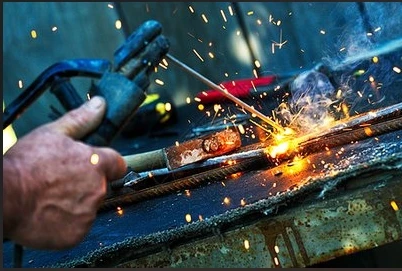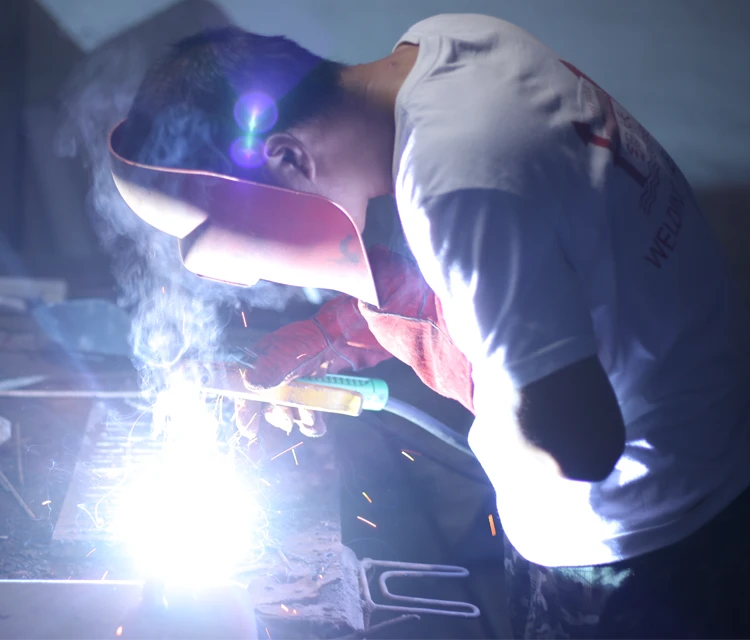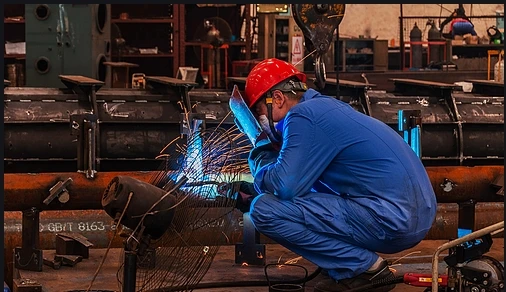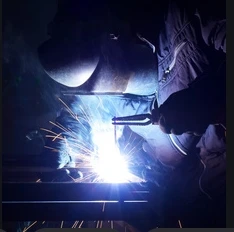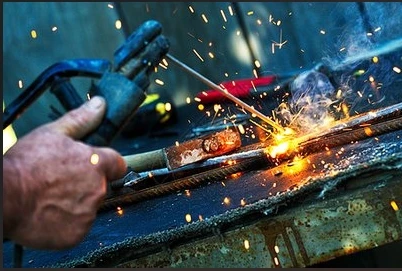Premium Gas Shielded Welding Wire: Solid MIG, .030 & .035 Options
Aug . 30, 2025 06:40
Introduction to Gas-Shielded Solid Welding Wire
In the demanding landscape of modern fabrication and manufacturing, the integrity and efficiency of welding processes are paramount. Among the diverse array of consumables, gas shielded welding wire stands out as a cornerstone for achieving high-quality, high-strength welds across numerous industries. This specialized product offers superior arc stability, minimal spatter, and excellent mechanical properties, making it the preferred choice for critical applications. Our comprehensive guide delves into the technical intricacies, application benefits, and strategic considerations for deploying this essential welding consumable.
We will explore its manufacturing precision, adherence to rigorous testing standards, and its crucial role in sectors ranging from petrochemical and metallurgy to general fabrication and infrastructure. Understanding the nuances of solid wire welding is vital for engineers, procurement specialists, and fabricators seeking optimal performance and cost-efficiency in their operations.
Current Industry Trends and Market Dynamics
The global welding consumable market, particularly for solid wire welding, is experiencing dynamic growth driven by increasing infrastructure development, automotive production, and energy sector expansion. Key trends impacting the adoption of gas shielded welding wire include:
- Automation and Robotics: The shift towards automated welding processes in manufacturing facilities demands consistent, high-quality wires like mig solid wire that can perform reliably under high-speed, continuous operations.
- Demand for High-Strength Steels: As industries increasingly utilize advanced high-strength steels (AHSS), the need for welding wires capable of matching or exceeding the base metal's mechanical properties, such as 71a85 welding wire, becomes critical.
- Environmental Regulations: Stricter regulations on welding fumes and energy consumption are pushing manufacturers towards more efficient processes and consumables, including those optimized for inert or mixed gas shielding.
- Emerging Markets: Rapid industrialization in developing economies fuels demand for robust welding solutions, where the versatility and performance of solid welding wire are highly valued.
Data from industry reports indicates a steady increase in the market share for solid welding wires due to their superior deposition efficiency and lower post-weld cleanup requirements compared to other types. This underscores the strategic importance of investing in high-quality solid welding wire solutions.
The Precision Manufacturing Process of Gas-Shielded Welding Wire
The production of high-performance gas shielded welding wire is a meticulously controlled multi-stage process, designed to ensure consistent metallurgical properties and precise dimensional tolerances. Adherence to international standards such as ISO 14341 and AWS A5.18 is critical at every step.
Process Flow Overview:
- Raw Material Sourcing: High-purity steel rods (typically low-carbon or alloy steel) are selected, ensuring minimal impurities and consistent chemical composition. Target industries include petrochemical, metallurgy, and heavy machinery, which demand stringent material quality.
- Wire Rod Drawing: The large-diameter steel rods undergo multiple drawing passes through progressively smaller dies. This cold working process reduces the wire diameter, increases tensile strength, and refines the grain structure. Intermediate annealing may be performed to restore ductility.
- Surface Cleaning: The drawn wire is thoroughly cleaned to remove lubricants, oxides, and other surface contaminants. This often involves mechanical descaling followed by acid pickling and rinsing, crucial for preventing porosity and enhancing arc stability during welding.
-
Copper Coating: A thin, uniform layer of copper is electroplated onto the clean wire surface. This copper coating serves multiple critical functions:
- Improves electrical conductivity for stable arc initiation and consistent current transfer.
- Enhances feedability through welding gun liners and contact tips.
- Provides corrosion resistance during storage and handling, extending service life.
- Final Drawing & Sizing: The copper-coated wire undergoes final drawing passes to achieve the precise final diameter (e.g., 030 solid mig wire oder 035 solid welding wire). Strict dimensional control is maintained.
- Spooling and Packaging: The finished wire is precision wound onto spools or drums, ensuring tangle-free feeding. Each spool is then carefully packaged to protect against moisture and damage.
-
Quality Control and Testing: Throughout the process, rigorous testing is conducted:
- Chemical analysis of raw materials and finished wire.
- Mechanical property testing (tensile strength, yield strength, elongation).
- Surface quality and copper coating thickness inspection.
- Wire feedability and arc stability tests under simulated welding conditions.
- Compliance with ISO, ANSI, and AWS standards.
This meticulous process ensures that this welding wire delivers optimal performance, contributing to energy saving through efficient deposition and offering enhanced corrosion resistance in the final weld.

Figure 1: High-precision manufacturing ensures superior quality gas shielded welding wire.
Technical Specifications and Performance Parameters
Selecting the appropriate solid welding wire requires a thorough understanding of its technical specifications. These parameters dictate the wire's performance characteristics, suitability for various base metals, and the resulting weld's mechanical properties.
Key Specifications for Gas-Shielded Solid Welding Wire:
| Parameter | Beschreibung | Typical Value / Standard |
|---|---|---|
| AWS Classification | American Welding Society classification for bare solid wires | ER70S-6, ER70S-3, ER80S-D2 (for specific alloys) |
| Tensile Strength | Maximum stress a material can withstand while being stretched or pulled before breaking | 550 - 620 MPa (79 - 90 ksi) for ER70S-6 |
| Yield Strength | Stress at which a material begins to deform plastically | 470 - 520 MPa (68 - 75 ksi) for ER70S-6 |
| Elongation | Measure of ductility, percentage increase in length after fracture | 22% - 28% |
| Impact Strength (Charpy V-notch) | Resistance to fracture under impact loading at specific temperatures | >27 J at -20°C (for ER70S-6) |
| Shielding Gas | Protects the weld pool from atmospheric contamination | 100% CO2 (co2 gas shielded welding wire), Ar/CO2 mixtures (e.g., 75% Ar / 25% CO2) |
| Wire Diameter | Standard diameters available | 0.8mm (0.030"), 0.9mm (0.035"), 1.0mm (0.040"), 1.2mm (0.045"), 1.6mm (0.062") |
| Deposition Rate | Amount of weld metal deposited per unit time | Highly variable based on parameters, generally high for solid wires |
Our products consistently meet and exceed these industry benchmarks, offering exceptional performance for critical applications.
Versatile Application Scenarios
The inherent versatility and superior performance characteristics of gas shielded welding wire make it indispensable across a multitude of industries. Its ability to produce clean, strong welds with minimal post-weld processing is highly valued.
- Automotive Manufacturing: Used extensively for chassis components, body panels, and exhaust systems, particularly with 035 solid welding wire Und 030 solid mig wire for precision and speed in robotic welding.
- Shipbuilding and Marine Applications: Critical for joining heavy plates in ship hulls, offshore platforms, and marine structures, where high strength and corrosion resistance are paramount.
- Pressure Vessels and Boilers: Requires flawless welds with excellent mechanical properties, making solid welding wire an ideal choice for containing high pressures and temperatures.
- Construction and Structural Fabrication: For beams, columns, bridges, and other heavy structural components where weld integrity is non-negotiable.
- General Fabrication: From machinery frames to industrial equipment, its ease of use and consistent results make it a staple.
- Energy Sector (Oil & Gas, Power Generation): For pipelines, storage tanks, and power plant components, demanding wires like 71a85 welding wire for high-temperature and fatigue resistance.
In these scenarios, the controlled arc and minimal spatter of solid welding wire contribute significantly to reduced rework and increased productivity, directly impacting project timelines and costs.
Technical Advantages of Gas-Shielded Solid Welding Wire
The preference for mig solid wire over other welding consumables stems from a range of distinct technical advantages that contribute to superior weld quality, operational efficiency, and cost-effectiveness.
- Superior Arc Stability: The clean wire surface and consistent chemical composition, coupled with the shielding gas (e.g., in a gas shielded mig welder setup), ensure a highly stable arc, leading to smooth weld beads and minimal irregularities.
- High Deposition Efficiency: Unlike flux-cored wires, solid wires do not produce slag, allowing for higher deposition rates and more weld metal per unit of wire consumed. This translates to faster welding speeds and increased productivity.
- Reduced Spatter: The combination of a stable arc and carefully formulated wire results in significantly less spatter compared to self-shielded wires or some flux-cored options. This minimizes post-weld cleaning, saving labor and time.
- Excellent Mechanical Properties: Welds produced with gas shielded welding wire consistently exhibit high tensile strength, yield strength, and toughness, crucial for structural integrity and longevity.
- Deep Penetration: The focused arc of MIG welding with solid wire provides excellent penetration, ensuring strong fusion and robust joints, particularly in thicker sections.
- Versatility in Welding Positions: With appropriate parameters and shielding gas, solid wires can be used effectively in all welding positions, offering flexibility in fabrication.
- Enhanced Corrosion Resistance: By producing cleaner welds with fewer inclusions, solid wires contribute to better long-term corrosion resistance, especially when paired with appropriate base materials and post-treatment.
These advantages collectively position solid wire welding as a premier choice for applications demanding both high quality and operational efficiency.
Solid Welding Wire vs. Flux Core: A Comparative Analysis
The choice between solid welding wire vs flux core often depends on specific application requirements, environmental conditions, and desired weld characteristics. While both have their merits, understanding their differences is key.
| Feature | Gasgeschützter Massivschweißdraht | Gas-Shielded Flux Cored Wire (e.g., gas shielded flux core wire) |
|---|---|---|
| Shielding Method | External shielding gas (CO2, Ar/CO2 mixes) | External shielding gas + flux in wire core |
| Slag Production | None | Yes, requires post-weld cleaning |
| Spatter Level | Very Low | Moderate to Low (better than self-shielded) |
| Deposition Efficiency | Higher (up to 98%) | High (80-90%), but lower than solid due to flux |
| Penetration | Good, precise control | Excellent, often deeper than solid wires |
| Smoke/Fumes | Relatively Low | Higher due to flux vaporization |
| Out-of-Position Welding | Good | Excellent, flux helps support the weld puddle |
| Cost-Effectiveness | Excellent due to high deposition and minimal cleanup | Good for heavy fabrication, but higher consumable cost and cleanup |
For precision work, automated applications, and scenarios where post-weld cleanup must be minimized, gas shielded welding wire remains the superior choice.
Vendor Comparison and Selection Criteria
Choosing the right supplier for gas shielded welding wire is as crucial as selecting the wire itself. A reliable vendor ensures consistent product quality, technical support, and supply chain stability. Key criteria for vendor comparison include:
- Certifications and Compliance: Verify adherence to international standards like ISO 9001, AWS, CE, and TÜV. This demonstrates a commitment to quality management and product safety.
- Product Range and Customization: A comprehensive product portfolio, including various wire diameters (e.g., 030 solid mig wire, 035 solid welding wire) and alloy compositions, alongside the ability to offer customized solutions, indicates versatility.
- Technical Support and Expertise: Access to experienced welding engineers and technical specialists who can provide application guidance, troubleshooting, and training.
- Supply Chain Reliability: A proven track record of on-time delivery, robust inventory management, and responsiveness to demand fluctuations.
- Quality Control and Testing: Detailed quality assurance protocols, including chemical analysis, mechanical testing, and real-world welding performance evaluations.
- Industry Reputation and Client Portfolio: A strong reputation, backed by testimonials, long-term partnerships with leading industrial clients, and years of service in the market.
Our company prides itself on meeting these stringent criteria, offering not just products, but a complete solution for your welding needs.
Customized Solutions for Specific Applications
Recognizing that standard products may not always suffice for unique or highly specialized welding challenges, we offer tailored solutions for solid welding wire. Customization can involve:
- Alloy Composition Modification: Adjusting the elemental composition to precisely match specific base materials or achieve particular mechanical properties (e.g., higher toughness, improved creep resistance for elevated temperatures).
- Special Diameters and Spool Sizes: Producing wires in non-standard diameters or winding them onto custom spool sizes to optimize feedability for unique automated systems or large-scale projects.
- Surface Treatment Enhancements: Applying specialized surface treatments beyond standard copper coating for enhanced feedability, reduced friction, or improved corrosion protection in aggressive environments.
- Proprietary Testing and Certification: Conducting additional, client-specific testing regimes and providing specialized certifications to meet bespoke project requirements or industry regulations.
Our engineering team collaborates closely with clients to define precise requirements, leveraging extensive metallurgical expertise and advanced manufacturing capabilities to deliver custom mig solid wire solutions that integrate seamlessly into their production processes and deliver superior results.
Application Case Studies
Real-world applications demonstrate the tangible benefits of utilizing high-quality solid welding wire.
Case Study 1: Large-Scale Pipeline Construction
A major energy infrastructure project required welding thousands of kilometers of high-strength steel pipelines. The challenge was to achieve high deposition rates while maintaining stringent weld quality, including excellent toughness and crack resistance, often in demanding weather conditions. By implementing our ER70S-6 gas shielded welding wire with a 75% Argon / 25% CO2 mixture, the client achieved:
- Increased Productivity: A 20% increase in welding speed due to higher deposition efficiency and consistent wire feeding, leading to faster completion times.
- Reduced Rework: Less than 0.5% defect rate (porosity, lack of fusion) significantly lowered repair costs and enhanced project quality.
- Superior Weld Integrity: Mechanical tests consistently showed tensile strengths exceeding project specifications and excellent Charpy impact values at low temperatures, crucial for long-term pipeline reliability.
Case Study 2: Robotic Automotive Frame Assembly
An automotive manufacturer needed to optimize its robotic welding lines for vehicle chassis components using 035 solid welding wire. The primary goals were to minimize spatter, improve arc start performance, and ensure consistent weld bead aesthetics for subsequent painting processes.
Our specialized copper-coated mig solid wire, combined with optimized welding parameters and a tailored co2 gas shielded welding wire approach, resulted in:
- 90% Reduction in Spatter: Drastically reduced post-weld grinding and cleaning, leading to significant labor cost savings.
- Enhanced Arc Starting Reliability: Consistent arc ignition for over 1 million starts, minimizing robot downtime and increasing throughput.
- Improved Paint Adhesion: Cleaner welds with minimal surface imperfections ensured better adhesion and overall finish quality for the vehicle bodies.
These case studies underscore our commitment to delivering high-performance welding solutions that directly address client challenges and contribute to their operational success.
Frequently Asked Questions (FAQ)
Q: What is the primary difference between solid wire and flux-cored wire?
A: Solid wire, like gas shielded welding wire, requires an external shielding gas (e.g., CO2 or Argon/CO2 mix) to protect the weld puddle. Flux-cored wire has a core filled with fluxing agents; it can be self-shielded (no external gas) or gas-shielded (using both flux and external gas). Solid wire produces no slag and minimal spatter, offering higher deposition efficiency and cleaner welds, ideal for precision and automated applications. Flux-cored wires generally offer deeper penetration and better out-of-position welding capabilities, often used for heavy fabrication in windy conditions (self-shielded).
Q: What shielding gas is recommended for ER70S-6 solid welding wire?
A: For ER70S-6, 100% CO2 (co2 gas shielded welding wire) provides good penetration and is cost-effective, though it can result in more spatter and a harsher arc. Argon/CO2 mixtures (e.g., 75% Argon / 25% CO2, or 90% Argon / 10% CO2) offer a smoother arc, less spatter, and better bead appearance, making them popular for general fabrication and automotive applications. The specific blend chosen depends on the material thickness, desired penetration, and cosmetic requirements.
Q: How does wire diameter affect welding performance?
A: Smaller diameter wires (e.g., 030 solid mig wire oder 035 solid welding wire) are suitable for thinner materials, lower amperage, and out-of-position welding due to their lower heat input and easier puddle control. Larger diameter wires are used for thicker materials, higher amperages, and flat/horizontal positions, allowing for higher deposition rates and deeper penetration. Selecting the correct diameter is critical for optimal arc stability and weld quality.
Q: What certifications do your welding wires hold?
A: Our products are manufactured under strict quality control systems certified to ISO 9001. They also comply with major international welding standards such as AWS A5.18, and relevant European standards (e.g., EN ISO 14341). Specific product certifications are available upon request for detailed project specifications.
Lead Time, Fulfillment & Logistics
We understand the critical importance of timely delivery in industrial operations. Our robust supply chain and logistics network are designed to ensure efficient fulfillment of orders for solid wire welding.
- Standard Lead Time: For stock items and common wire specifications, our typical lead time is 7-14 business days from order confirmation.
- Expedited Orders: We offer options for expedited shipping for urgent requirements, subject to availability and additional charges. Please contact our sales team for tailored solutions.
- Customized Solutions: Lead times for custom alloy compositions or non-standard spooling may vary depending on complexity and material availability. Our team will provide a detailed project timeline upon consultation.
- Global Shipping: We serve clients worldwide, utilizing reliable freight partners for both sea and air cargo, ensuring safe and secure delivery to your facility.
- Inventory Management: We maintain strategic inventory levels of popular mig solid wire types to mitigate supply disruptions and support consistent customer demand.
Our commitment is to transparency and reliability in every aspect of order fulfillment, ensuring your production schedules remain uninterrupted.
Warranty and Customer Support
Our dedication to quality extends beyond product delivery. We stand behind our products with comprehensive warranty and exceptional customer support services.
- Product Warranty: All our welding wires are covered by a standard manufacturer's warranty against defects in material and workmanship, typically for 12 months from the date of purchase. Specific warranty details are provided with each order and product documentation.
- Technical Assistance: Our team of expert welding engineers and technical support staff is available to provide guidance on product selection, welding parameters, troubleshooting, and process optimization. We offer support via phone, email, and on-site visits where necessary.
- After-Sales Service: We provide ongoing after-sales support to ensure optimal performance of our products in your applications. This includes assistance with product storage, handling, and continuous improvement recommendations.
- Feedback Mechanism: We actively solicit customer feedback to continually enhance our products and services. Your input is invaluable in our pursuit of excellence.
Partner with us for reliable products and unwavering support, ensuring your welding operations run smoothly and efficiently.
Conclusion
The deployment of high-quality gas shielded welding wire is a critical decision for any B2B entity striving for superior welding outcomes, operational efficiency, and long-term structural integrity. From its meticulous manufacturing process, guided by international standards, to its versatile applications across demanding sectors like petrochemical and automotive, this consumable stands as a testament to advanced welding technology. By offering a robust blend of technical advantages, customizable solutions, and unwavering support, we ensure that our clients can achieve optimal performance, reduce operational costs, and build with unparalleled confidence.
References
- American Welding Society (AWS). AWS A5.18/A5.18M:2017, Specification for Carbon Steel Electrodes and Rods for Gas Shielded Arc Welding.
- International Organization for Standardization (ISO). ISO 14341:2011, Welding consumables - Wire electrodes and deposits for gas shielded metal arc welding of non alloy and fine grain steels - Classification.
- The Welding Institute (TWI). "MIG/MAG Welding - Arc Types and Wire Selection." TWI Global, 2023.
- Lincoln Electric. "MIG Welding Basics." Lincoln Electric Education Center, 2022.
 Durchlässig
Durchlässig
Dies ist der erste Artikel
Ähnliches Video



